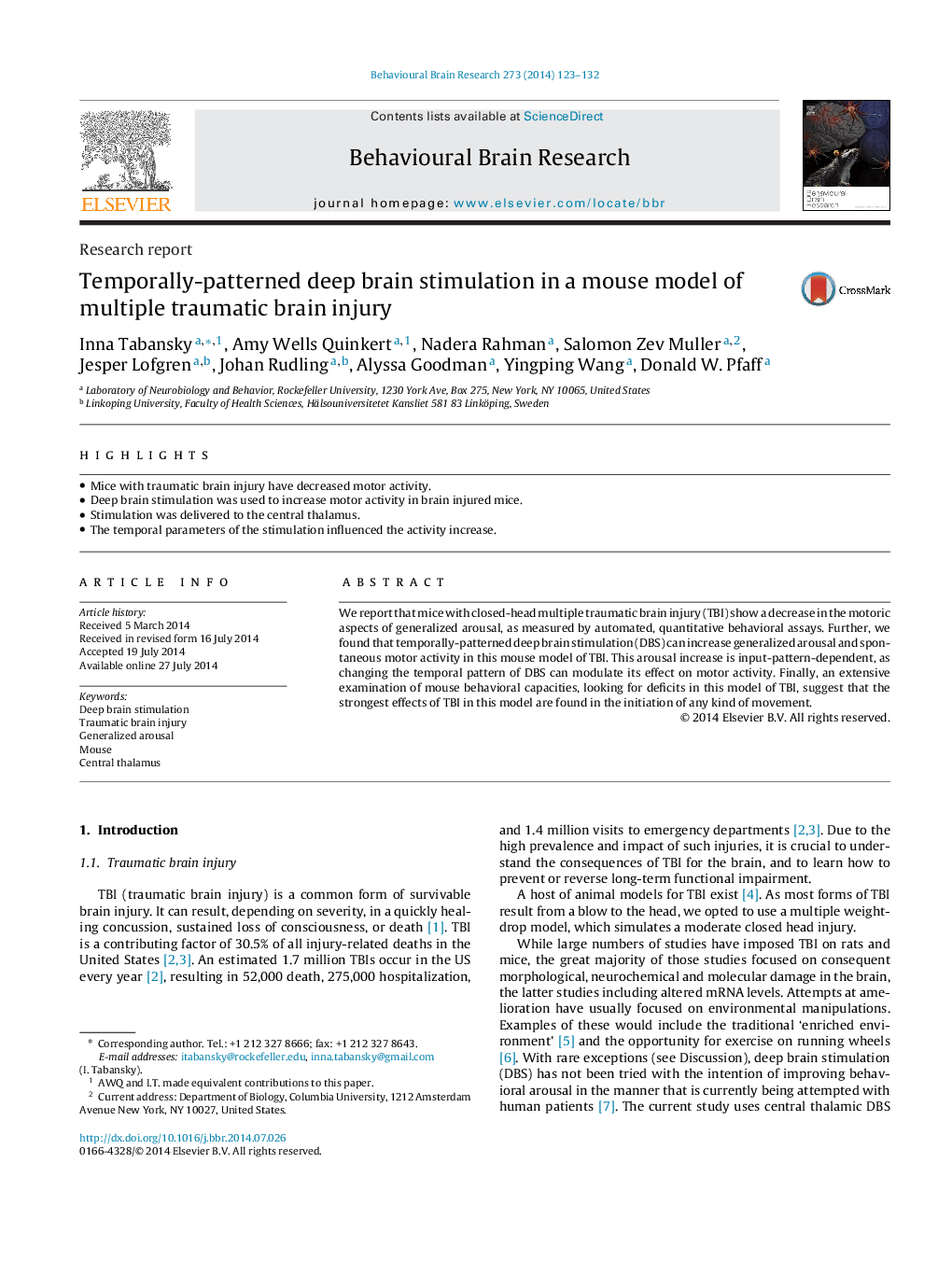| Article ID | Journal | Published Year | Pages | File Type |
|---|---|---|---|---|
| 4312510 | Behavioural Brain Research | 2014 | 10 Pages |
•Mice with traumatic brain injury have decreased motor activity.•Deep brain stimulation was used to increase motor activity in brain injured mice.•Stimulation was delivered to the central thalamus.•The temporal parameters of the stimulation influenced the activity increase.
We report that mice with closed-head multiple traumatic brain injury (TBI) show a decrease in the motoric aspects of generalized arousal, as measured by automated, quantitative behavioral assays. Further, we found that temporally-patterned deep brain stimulation (DBS) can increase generalized arousal and spontaneous motor activity in this mouse model of TBI. This arousal increase is input-pattern-dependent, as changing the temporal pattern of DBS can modulate its effect on motor activity. Finally, an extensive examination of mouse behavioral capacities, looking for deficits in this model of TBI, suggest that the strongest effects of TBI in this model are found in the initiation of any kind of movement.
